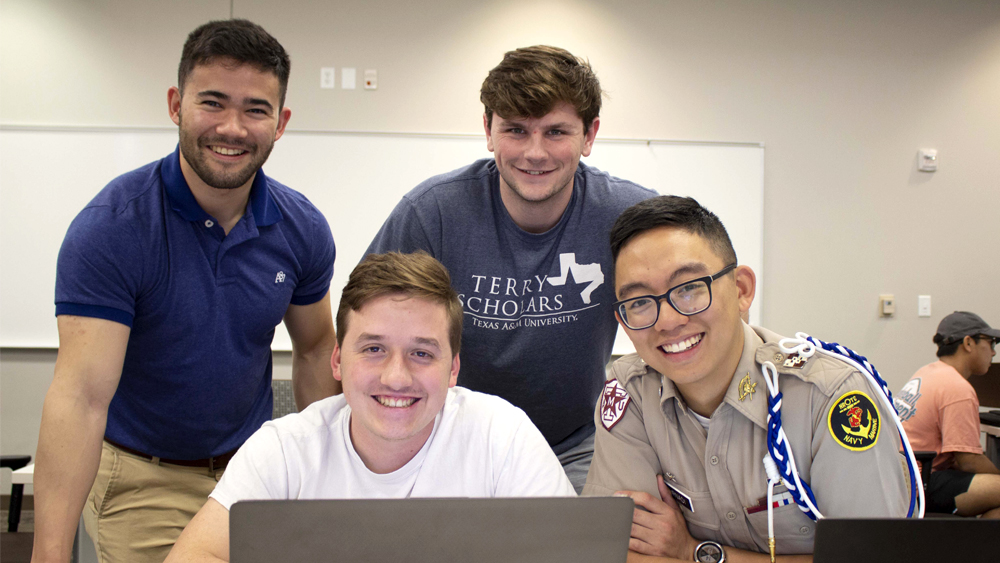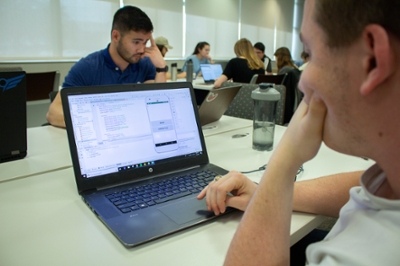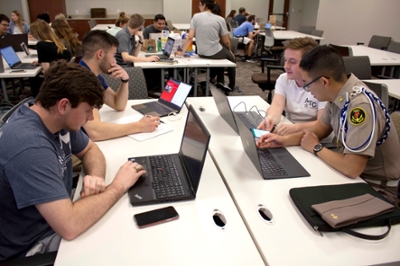
Sponsor: University of Texas Southwestern Medical Center
With technology always evolving, healthcare has to change as well, using telehealth to reach patients who cannot easily travel to a physical clinic or hospital. A senior capstone design team is developing a new phone app to help diagnosis neurological issues.
Project Need: Low-contrast visual acuity tests are given to patients to test and potentially diagnose a variety of conditions, including certain neurological deficits such as multiple sclerosis. There are currently no versions of this test for phones, nor is there an app to test vision in this way outside of a clinic. The tests take the letter exam seen in any eye doctor’s office but adjust the shade of the letters. Instead of black, the letters are at 2.5 percent grayscale contrast, the standard for low contrast visual acuity testing. Grayscale letters are harder to distinguish against a white background.
Solution: The team developed a phone application that can deliver a low-contrast visual acuity test to a patient remotely.
“Our application is sort of a first test to see how your vision is doing, and see if that's manifesting as a symptom of a larger issue,” Matthew Armstrong said. “Our assignment is to design something that can be deployed remotely. It's our job to narrow down the problem statement enough to a tangible opponent.” Pandemics, such as COVID-19, showcase the urgent need for telehealth options and the necessity for remote healthcare assessments.
Challenges: The team has had to work to configure the camera app on a phone to run their program effectively, along with learning a coding system they had not used before in class.
“I think in the long term, this will help significantly improve our skills when we go into the workforce, because we have a different mindset going in,” Joseph McMahan said. “We can say, ‘Hey, why don't we try approaching it this way, which has never been done before.’ It gives us that motivation and that insight, as opposed to sitting down and going through the same old scenarios.”
Broader impact for students: Team members Andrew Purnadi and Austen Kaul said the two-semester project prepared them well for life after graduation.
“We come up with our own deadlines, we have to come up with our own plan,” Purnadi said. “Having to plan out everything and to essentially take charge of the project is a really good experience since we're about to enter the workforce.”
“Careers don't end in a semester,” Kaul said. “You don't do your three months of it, and then say, ‘Okay, well, I got my grade in this class and I’m done.’ No, your job is your job and you're going to stick to it until the design is actually finished.”